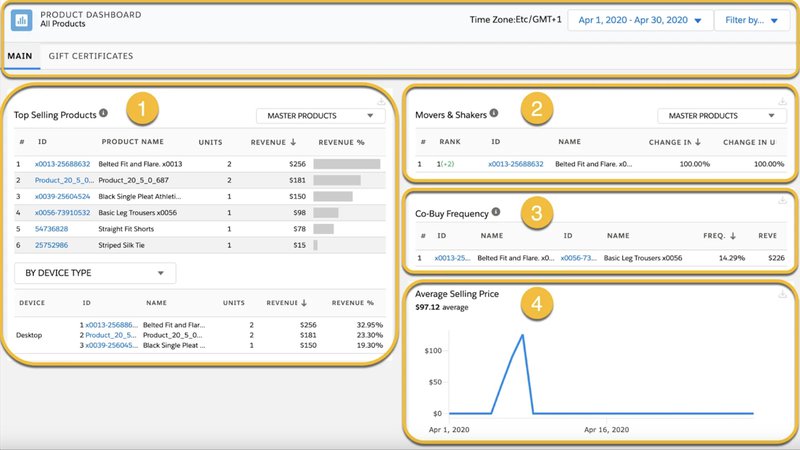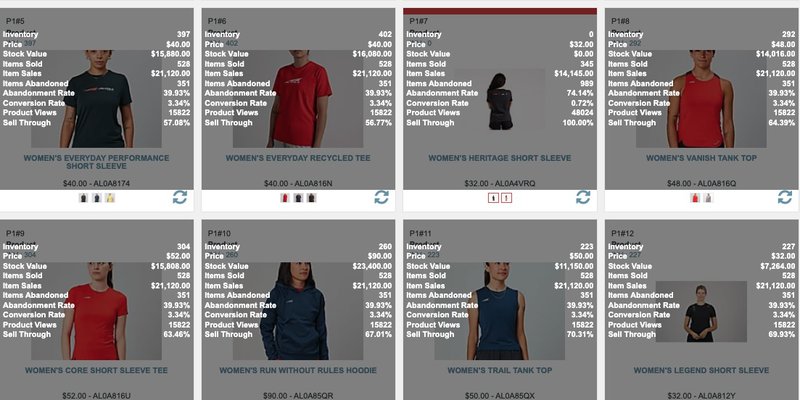Artificial intelligence (AI) is all around us. It’s not just about the algorithms that power our smart devices–like speakers, phones, cars, and house lights. AI is also a constant companion in numerous business functions and processes. Today, companies harness AI to improve results in finance, warehousing, manufacturing, sales, and marketing disciplines. For sales and marketing, in particular, artificial intelligence plays a major role at every stage of the sales pipeline. It enhances output in labor-heavy tasks such as identifying leads, eCommerce merchandising, and marketing copywriting. But does this mean that the world is heading for a future where nothing gets done without AI?
Understanding Data Analytics in eCommerce Merchandising
When it comes to eCommerce, generating actionable insights is the major reason for deploying artificial intelligence. Specifically, AI powers business analytics–which involves collecting sales data to find connections between seemingly unrelated information. This process forms the basis for observations and understandings that help steer the company into corrective action.

In eCommerce, data analytics refers to gathering statistics about customer habits and online sales performance. Most importantly, data analytics measures how this influences a customer’s purchase decisions.
Meanwhile, visual eCommerce merchandising helps sellers display selected items in their online store. Factors like choice of item, placement, and timing all help to increase the brand’s appeal to consumers. Thanks to visual analytics, merchandisers are able to rank their products by sorting KPIs–for instance, product views, abandonment rate, conversion, and more. This, in turn, informs brand marketers with regard to optimizing their item placement strategy.
The more companies know about the customer experience, the better they’ll be able to make it. For example, analytics might tell you that customers abandon their shopping carts or leave the website due to long wait times. The lesson is for online stores to improve their page loading time for elements such as images and item data. Analytics also plays a major role in determining patterns in consumer behavior.

A case in point would be deciding between putting winter gear on sale during summer months or selling fewer items at markup during actual winter months. For many retailers, summer is the best time to clear last year’s unsold inventory. For consumers, buying winter clothing on sale gives them the impression of saving money. Instead of following trends blindly, sellers can use analytics to tell the story of how your actual customers behave.
Navigating Potential Pitfalls of AI in Data Collection
Whether in eCommerce merchandising or anywhere else in the sales pipeline, data analytics isn’t necessarily the last word on the subject. The quality of insight depends entirely on the quality of the data gathered.
Let’s look at the main factors surrounding AI-assisted data collection:
The Problem With Surveys
Many companies conduct consumer surveys to get the market’s pulse. When done right, it’s a great tool. That said, based on user demographics, data may be skewed for some industries. To illustrate, it’s sometimes the case that only customers with extremely positive or negative feedback will reply to questionnaires.
Don’t Dismiss Privacy
In eCommerce merchandising, privacy is a concern that organizations cannot take for granted. Customers need to give their wholehearted (and not implied) consent for businesses to harvest their data. As such, having lots of respondents decline to share their information can muddy the eventual results. Here, AI requires human input to distinguish between these respondents.
Experience is Non-Negotiable
A combination of large data volumes and not enough tools or personnel to interpret it all may also lead to inaccurate observations. There are extremely few unemployed data scientists in the market today, meaning that demand outpaces supply. Getting an experienced analytics person well-versed in AI tools could present a hiring challenge for companies working to a tight budget. On a related note, the cost of simply purchasing and maintaining top-of-the-line AI systems presents a whole new issue.
Statistics Aren‘t People
Finally, because AI analyzes data very logically and dispassionately, businesses may lose sight of the human element. After all, customers are more than mere statistics. At the same time, analytics doesn’t always have the nuance or context of personal interactions.
Assuming that a lack of umbrellas means people are more likely to catch a cold can erroneously lead to a recommendation to buy umbrellas. It doesn’t account for people who already have an umbrella but left it at home. It also won’t pick up that most people won’t carry an umbrella if the weather gave no earlier indication of rain. Moreover, it also assumes that people only catch colds by getting drenched in the rain.
Maximizing Analytics in eCommerce Merchandising
Even without AI tools and personnel, online retailers can still gather useful analyses from their eCommerce merchandising. Data analytics on its own may mean statistics, automated tasks, and decision-making systems. Learning to read and integrate your customers’ behavior patterns, warehouse movements, and market cycles will also give insightful boosts. This type of approach doesn’t rely on AI to achieve a sound overview of the issues.

In eCommerce merchandising, understanding consumer behavior means embracing market trends. If your site’s report says that sales of blue shirts are picking up, then your merchandising efforts should focus on that. Conversely, items that show up as “sold out” should be removed from any current merchandising programs. If not, stores may well face accusations of displaying false information.
Intrepid online retailers design their eCommerce systems to trigger automated actions based on analytics results. In response to specific conditions, such as increased demand or stockouts, the eCommerce merchandising platform automatically springs into action. It can support an item’s increase in sales by scaling up merchandising opportunities. At the same time, it can automatically pull out items that are already sold out.
Zobrist’s Smart Merchandiser Responds to the Call
Optimizing a digital storefront once required exhaustive tasks to manually sort items for display. Merchandising teams used to spend countless hours organizing retail products, selecting items for merchandise, and cross-checking inventory stock, location, and other details.
Thankfully, Zobrist’s Smart Merchandiser removes the need for manual intervention in managing your digital store’s eCommerce merchandising. To optimize your entire catalog’s sequence, you just need to drag and drop products to arrange their merchandise order. Smart Merchandiser’s built-in analytics also helps you visualize each item’s attributes, including revenue, conversion/abandonment rate, page views, etc. Meanwhile, with social analytics it’s possible to see how popular an item is based on social cues such as likes, reposts, and comments.
Smart Merchandiser can boost your store team’s productivity by 70% while raising revenues by up to 20%. Want to find out more? Send us a message and we’ll be happy to get in touch and talk about our solutions to your eCommerce woes.



